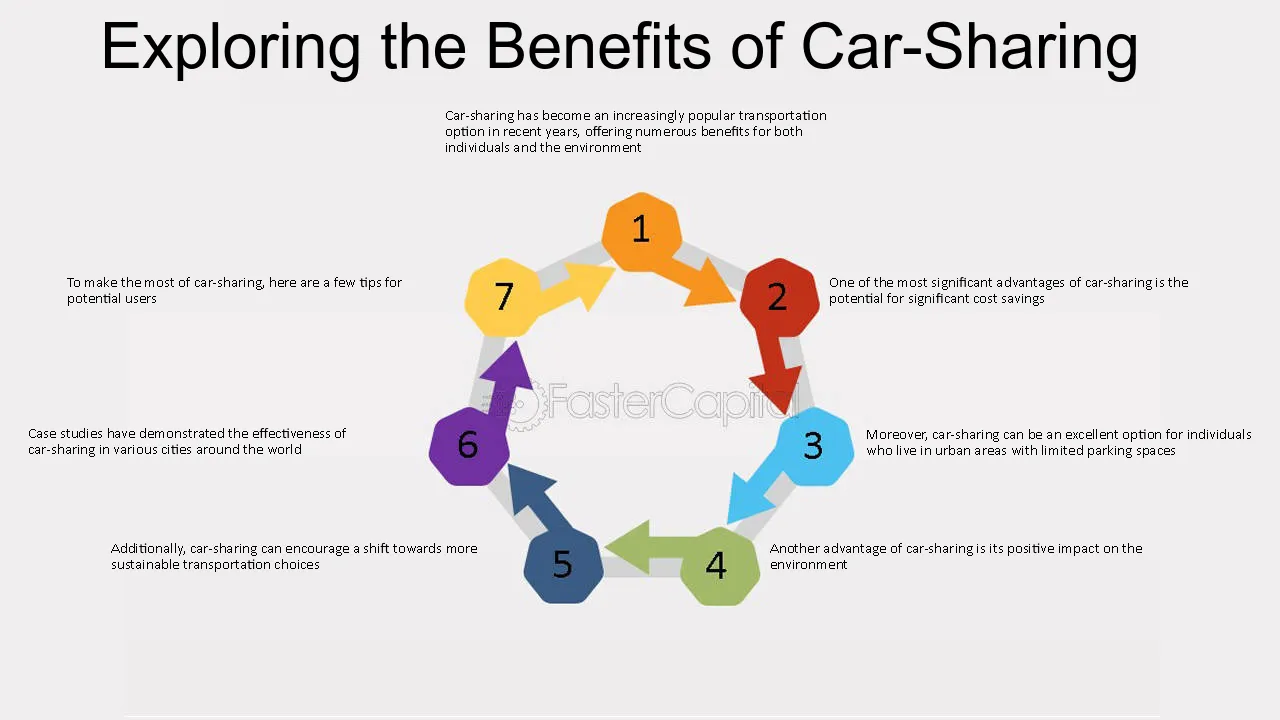What Is Car Sharing? Explained
Mia Wilson

Photo: What Is Car Sharing? Explained
car sharing has emerged as a revolutionary transportation model, redefining how people access and utilize vehicles. This innovative concept is gaining popularity worldwide, driven by urbanization, environmental concerns, and shifting preferences toward cost-effective and sustainable mobility solutions. But what exactly is car sharing, and why is it transforming the way we think about transportation? Let’s explore this concept in detail.
Introduction to Car Sharing
Car sharing is a service that allows individuals to rent vehicles for short periods, often by the hour or day, without the costs and responsibilities of owning a car. Unlike traditional car rental services, car sharing is typically focused on local, short-term usage and is facilitated through membership-based programs or app-based platforms.
The idea behind car sharing is simple: instead of owning a car that may sit idle for much of the day, people can access a shared fleet of vehicles whenever they need them. This model offers flexibility, convenience, and affordability, catering to a wide range of users, from commuters and travelers to businesses seeking efficient transportation solutions.
How Car Sharing Works
Car sharing services operate through a straightforward process:
- Membership or Registration: Users sign up for a car-sharing service, which may involve a membership fee or verification of driving credentials.
- Booking a Vehicle: Members can reserve a vehicle through a mobile app or website, selecting the type and duration of their rental.
- Accessing the Car: Many services use technology to allow users to unlock and start vehicles with their smartphones or membership cards, eliminating the need for physical keys.
- Usage and Payment: Users pay based on the time or distance they drive. Fuel and insurance are often included in the cost.
- Return: Cars are typically returned to a designated station or parking spot, although some services offer flexible drop-off locations.
Types of Car Sharing Models
Car sharing comes in various forms, each catering to specific needs and demographics. Here are the most common models:
1. Round-Trip Car Sharing
This traditional model requires users to pick up and return the vehicle to the same location. It’s ideal for planned trips, such as running errands or day-long excursions.
2. One-Way or Free-Floating Car Sharing
In this model, users can pick up a car from one location and drop it off at another. It’s a popular choice for urban commuters and one-off journeys.
3. Peer-to-Peer (P2P) Car Sharing
This service allows private car owners to rent out their vehicles when not in use. Platforms act as intermediaries, connecting owners with renters and handling payments and insurance.
4. Corporate Car Sharing
Designed for businesses, this model enables employees to access shared company vehicles for work-related tasks, reducing fleet costs and optimizing usage.
Benefits of Car Sharing
Car sharing offers numerous advantages for individuals, communities, and the environment. Below are some key benefits:
1. Cost Savings
Car ownership comes with significant expenses, including insurance, maintenance, fuel, and parking fees. Car sharing eliminates these costs, allowing users to pay only for the time and distance they drive.
2. Environmental Impact
By promoting shared usage, car sharing reduces the number of vehicles on the road, leading to lower greenhouse gas emissions and decreased congestion. It also encourages the use of fuel-efficient and electric vehicles.
3. Convenience
Car sharing provides on-demand access to vehicles without the hassles of ownership. With a wide variety of car types available, users can select the right vehicle for their specific needs.
4. Reduced Urban Congestion
Fewer cars on the road translate to less traffic congestion, freeing up urban spaces previously occupied by parked vehicles.
5. Increased Accessibility
Car sharing services are particularly beneficial in urban areas where owning a car may be impractical or costly. It offers mobility solutions for individuals who don’t drive frequently or can’t afford a vehicle.
Challenges of Car Sharing
While car sharing has numerous benefits, it also faces several challenges:
1. Availability Issues
High demand during peak hours can lead to limited vehicle availability, potentially frustrating users.
2. Upfront Costs
Although car sharing is cost-effective in the long run, membership fees or initial deposits can be a barrier for some individuals.
3. Limited Coverage
Car sharing services are typically concentrated in urban areas, leaving rural and suburban populations underserved.
4. Maintenance and Cleanliness
Users may encounter vehicles in varying states of cleanliness or repair, as upkeep largely depends on service providers.
Car Sharing vs. Ride Sharing
It’s essential to differentiate car sharing from ride sharing. While both involve shared mobility, they serve different purposes:
- Car Sharing: Users rent a vehicle and drive it themselves. It’s ideal for errands, day trips, or when a personal car is temporarily unavailable.
- Ride Sharing: Services like Uber and Lyft connect passengers with drivers for one-time rides, similar to taxis. Users do not operate the vehicle themselves.
Understanding this distinction helps clarify how car sharing complements rather than competes with other shared mobility options.
The Future of Car Sharing
The car-sharing industry is poised for growth, fueled by advancements in technology and a global push toward sustainability. Key trends shaping the future of car sharing include:
- Integration with Public Transportation: Car sharing is increasingly being integrated with public transit systems, offering seamless, multimodal travel options.
- Electric Vehicles (EVs): Many car-sharing fleets are transitioning to EVs, aligning with environmental goals and reducing operational costs.
- Autonomous Vehicles: Self-driving cars could revolutionize car sharing, making the service even more efficient and accessible.
- Expansion to New Markets: Car-sharing providers are exploring opportunities in underserved regions, including suburban and rural areas.
Conclusion
Car sharing represents a paradigm shift in how people access transportation. By prioritizing efficiency, sustainability, and convenience, this model has the potential to reshape urban mobility and reduce the environmental footprint of driving. While challenges remain, ongoing innovation and increased adoption suggest that car sharing will continue to thrive as a viable alternative to car ownership.
For individuals seeking flexibility and affordability, or communities aiming to combat congestion and pollution, car sharing offers a promising path forward. Whether you’re a daily commuter, a weekend traveler, or a business looking to streamline logistics, car sharing could be the key to unlocking smarter, greener transportation.
For You
View AllLearn the online car buying process and how to secure the best deals with ease. Get expert tips for a safe and smart purchase!
Mia Wilson
Understand vocational education and how it prepares individuals for hands-on careers. Explore practical learning today!
Mia Wilson
Dive into Al Green's top 10 tracks that defined a generation. Relive the soulful melodies that still resonate today. Listen now!
Mia Wilson
Discover the importance of physical education, its benefits, and why it's crucial for overall development. Learn more now!
Mia Wilson
Discover the top performance car brands that dominate the market with speed, style, and innovation. Find your dream car now!
Mia Wilson
Stay ahead with the latest real estate market trends and insights. Click to explore what’s shaping property markets today!
Mia Wilson
Education
View All
April 27, 2025
How to Become a Special Education Teacher
Explore the steps to becoming a special education teacher and making a difference in students’ lives. Start today!

April 18, 2025
What Is Special Education?
Dive into special education, its purpose, and how it supports students with unique needs. Learn how it changes lives!

April 14, 2025
What Is Post-Secondary Education?
Understand post-secondary education, its types, and how it shapes careers. Start exploring your opportunities today!





